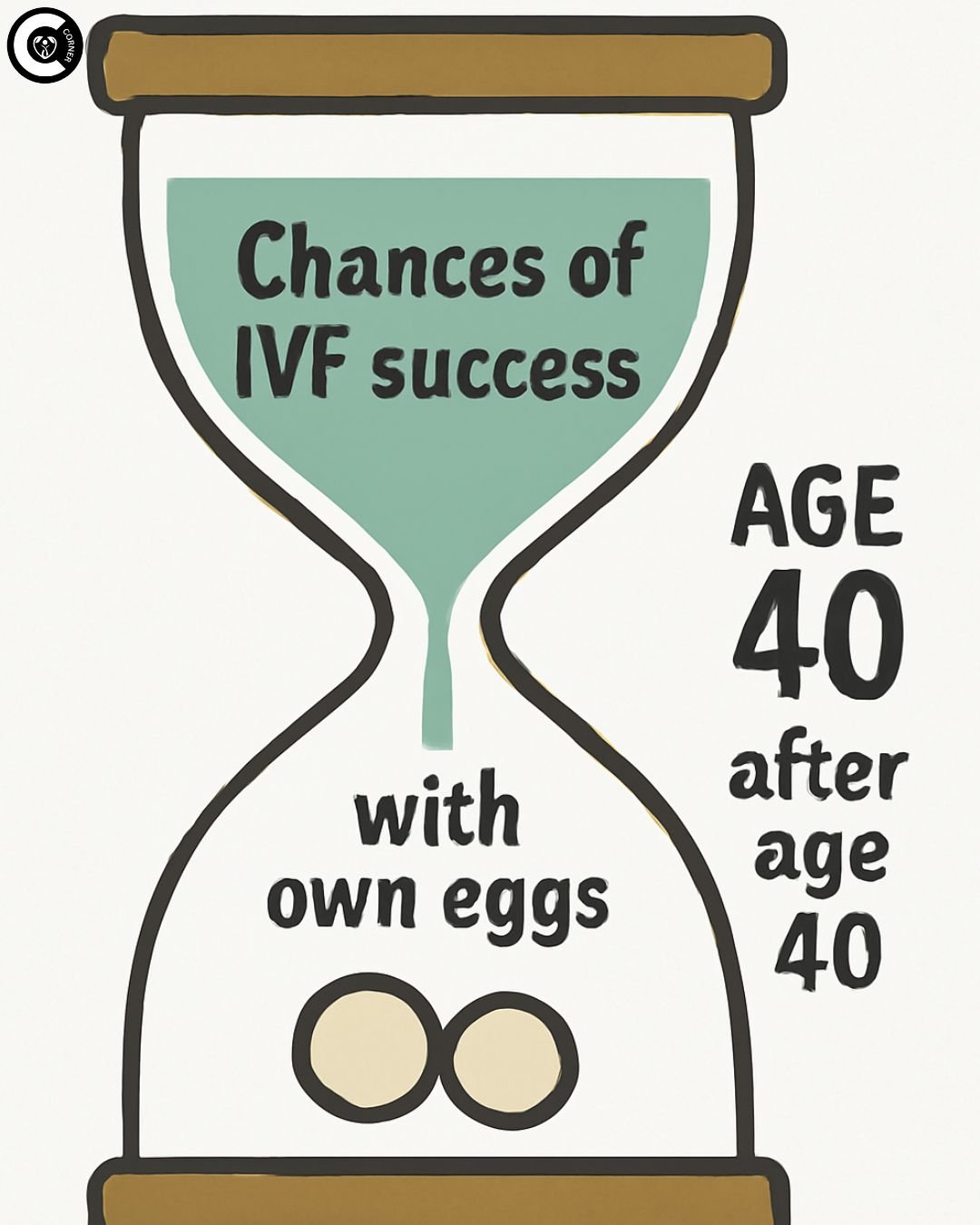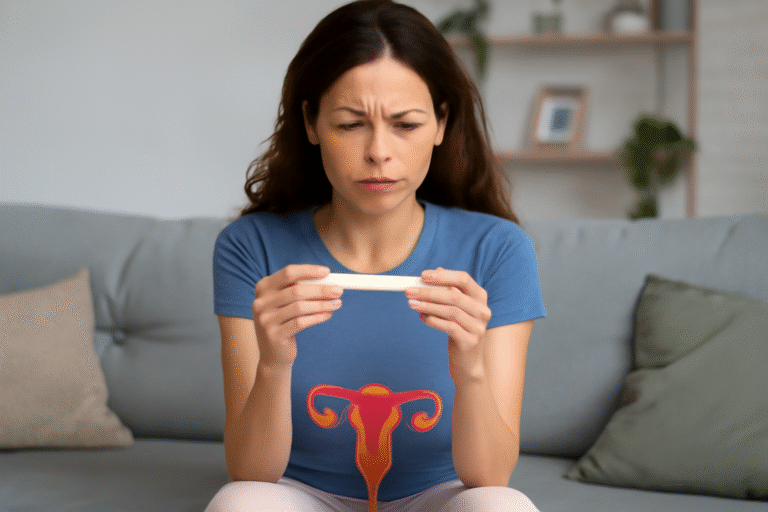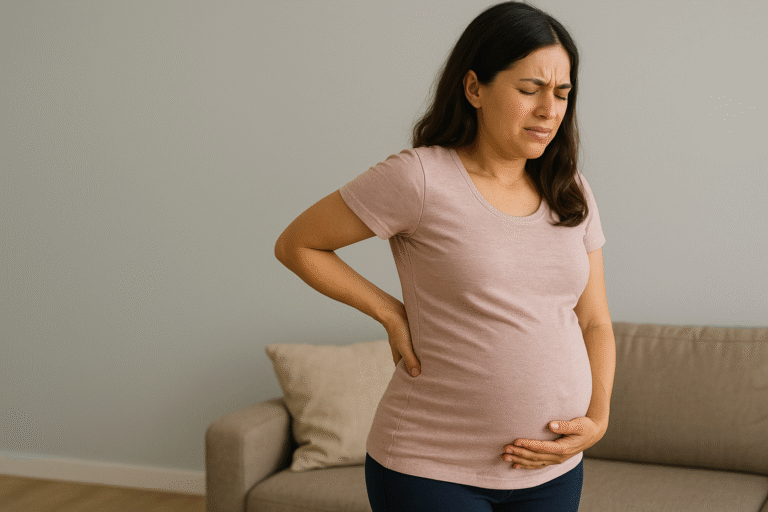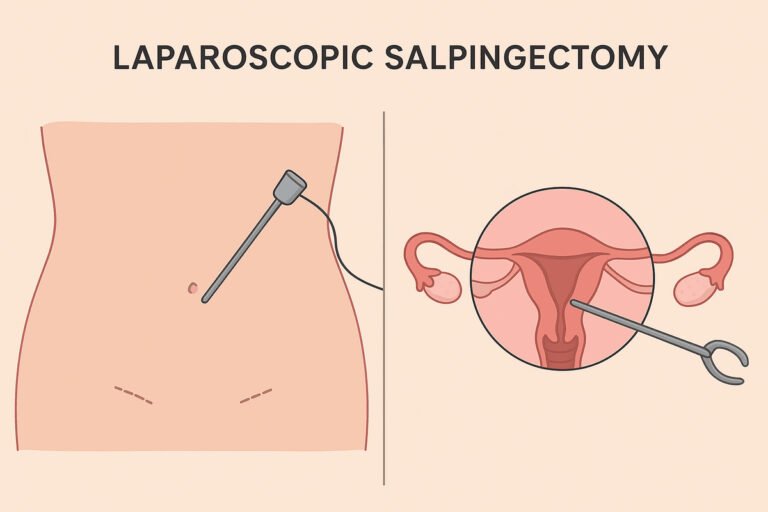Using your eggs for in vitro fertilization (IVF) is a very personal route to becoming a parent, but how well it works depends on your biological age. Egg quantity and quality both go down as women become older, which has a direct effect on the results of IVF. It’s not only about the numbers when it comes to understanding the success rates of IVF with your eggs. It’s also about setting reasonable goals, making smart choices, and making the most of your unique journey. This detailed guide, which is based on clinical data, breaks down IVF success rates using your eggs by age. No matter how old you are, 28 or 42, knowing what to do next gives you strength.
What Does “IVF with Own Eggs” Truly Entail?
When you do IVF using your own eggs (also called autologous IVF), you stimulate your ovaries, get your eggs, fertilize them with sperm in a lab, and then put healthy embryos into your uterus. This approach keeps your genetic link to the baby, unlike donor-egg IVF. Its effectiveness depends on the ovarian reserve (the number of eggs left) and oocyte quality. Both decline significantly with age. Clinics use blood tests (AMH, FSH) and ultrasound (AFC) to check these. IVF technology becomes better every year, but it can’t stop eggs from getting worse with age. This makes IVF success rates by age an important planning tool.
Key Factors Influencing Your Chances of IVF Success with Own Eggs
Age is the most important factor in IVF success with one’s eggs. However, other factors also shape a person’s prognosis, sometimes offsetting or intensifying age’s impact. Knowing these things gives you a better idea of how likely it is that your eggs will work for IVF:
- Ovarian Reserve: This is the number of eggs that are still in the ovaries. Low AMH, high FSH, or low AFC levels can show that a woman’s ovarian reserve is low (DOR). This suggests fewer eggs will be retrieved per cycle. With fewer eggs, chances of fertilization, embryo development, and viable embryos for transfer or freezing decrease, directly lowering cumulative success rates.
- Lifestyle Factors: Research shows that smoking harms egg quality and ovarian reserve. These factors reduce IVF success rates. Obesity can throw off hormone levels, make medications that cause stimulation less effective, and raise the chance of miscarriage. Maintaining a healthy weight, exercising moderately, and managing stress can improve fertility. Reducing alcohol and caffeine intake may also help.
- Sperm Health: The female partner is not the only thing that matters for IVF to work. Male factor infertility can make it much harder to get pregnant and can result in embryos of lower quality. This is because of problems with sperm count (oligospermia), movement (asthenospermia), or shape (teratospermia). Even with advanced methods like ICSI (intracytoplasmic sperm injection), this can happen. A full semen analysis is an important aspect of the pre-IVF workup.
- Uterine Receptivity: For embryo implantation to happen, the uterine lining (endometrium) must be healthy and able to accept it. Uterine conditions like fibroids, polyps, or scarring can impair embryo implantation. Even with genetically normal embryos, these issues may increase miscarriage risk.
- Clinic Expertise and Laboratory Quality: Fertility clinic success rates vary significantly due to differences in lab quality, embryologist expertise, and ovarian stimulation protocols. Experience handling complex cases also plays a key role. It is also important to look up the SART/CDC success rates for each facility.
- Medical Conditions: Untreated thyroid disorders, uncontrolled diabetes, and autoimmune diseases can reduce IVF success. Severe endometriosis, particularly ovarian involvement, also lowers chances.
- Genetic Abnormalities: The number of chromosomal abnormalities (aneuploidy) in a woman’s eggs goes up a lot as she gets older. These issues are a leading cause of implantation failure and early pregnancy loss. In rare cases, they may also contribute to chromosomal disorders like Down syndrome. Preimplantation Genetic Testing for Aneuploidy (PGT-A) checks embryos for these problems.
A full pre-IVF evaluation includes a semen analysis, uterine assessment (via hysteroscopy or saline ultrasonography), hormonal bloodwork, and infectious disease screening. But age is still the most important factor that affects everything else. By addressing these issues, you can personalize and improve your chances of IVF success with your own eggs.
Also Read: Learn About Fertility Supplements
Realistic IVF Success Rates with Own Eggs by Age
The Society for Assisted Reproductive Technology (SART) in the US, the Centers for Disease Control and Prevention (CDC), and the Human Fertilization and Embryology Authority (HFEA) in the UK all carefully collect and report anonymous data on IVF outcomes. SART gathers US IVF outcome data. The CDC also tracks and reports this anonymously. Based on data from multiple registries, below is a detailed breakdown of IVF with your own eggs success rates by age:
Under 35 Years Old: The Peak Fertility Window Offers Highest Success
Women under 35 typically have the highest IVF success rates. This is due to their greater number of high-quality eggs. This means that a larger percentage of embryos have the right number of chromosomes (euploid).
- Live Birth Rate per Embryo Transfer: The live birth rate per embryo transfer is usually between 40% and 55%. In this age bracket, about 40 to 55% of every 100 embryo transfers lead to a live birth.
- Cumulative Live Birth Rate per Cycle Started (including frozen transfers): Success rates rise substantially with multiple cycles. Cumulatively, they often reach 65–80% over three full IVF cycles (including frozen transfers). This shows how useful it could be to bank embryos.
- Miscarriage Risk: not very high, usually between 10% and 15%.
- Typical Egg Retrieval Yield: A typical cycle retrieves 10–20 eggs. This provides ample chances for successful fertilization and embryo growth. Higher yields often produce extra high-quality embryos for cryopreservation. This allows future sibling cycles without repeating ovarian stimulation.
- Key Factors: The high number of genetically normal eggs is the main reason for success. This age group commonly requires IVF for tubal issues or male factor infertility. Unexplained infertility is another frequent indication. This is not because their ovaries are not producing enough eggs.
Ages 35-37 Years: The Gradual Decline in Success Rates Becomes Evident
This period represents the start of a more visible speed-up in the reduction of egg quality and quantity compared to the under-35 group. This leads to a quantifiable drop in the success rates of IVF with one’s own eggs.
- Live Birth Rate per Embryo Transfer: The live birth rate per embryo transfer goes down to about 30% to 40%.
- Cumulative Live Birth Rate: The cumulative live birth rate usually drops to about 50–65% across three cycles.
- Risk of Miscarriage: This goes up to about 20–25% because embryos are more likely to have chromosomal problems.
- Average Egg Retrieval Yield: Usually drops to 6–12 eggs per cycle.
- Key Insight & Strategy: The drop shows how important it is to be efficient. Preimplantation Genetic Testing for Aneuploidy (PGT-A) is becoming a more common suggestion. PGT-A analyzes embryo chromosomes prior to transfer. This can boost live birth rates per transfer and decrease miscarriage risk. It also lessens the emotional burden of unsuccessful attempts. It helps keep embryos that are likely to fail or miscarry from being transferred.
Ages 38-40 Years: Navigating Significantly Steeper Challenges
The success rates of IVF using their eggs drop more quickly in this age group because aging has a bigger effect on the quality of eggs. The number of eggs with chromosomal problems goes up a lot.
- Live Birth Rate per Embryo Transfer: The live birth rate per embryo transfer goes down even more to between 20% and 25%.
- Cumulative Live Birth Rate: This drops a lot, usually to 30–45% after several cycles, because it’s harder to get euploid embryos.
- Risk of miscarriage: Rises a lot, to 30% to 40% or more, because embryonic aneuploidy is so common.
- Typical Egg Retrieval Yield: Usually drops to 4 to 8 eggs every cycle of retrieval.
- Critical Strategies: To get the most eggs, more aggressive ovarian stimulation protocols may be used, which may involve larger doses of medicine or other drug combinations. However, the response can vary. PGT-A is highly recommended, and in some cases even necessary, to make sure that each transfer effort is as efficient as possible by only choosing euploid embryos. Patients should be realistic about the fact that they may need to go through numerous IVF cycles to get enough embryos for transfer and/or to have a healthy pregnancy. The key is to keep going and manage your expectations.
IVF with Own Eggs Success Rates at 42: Confronting a Dramatic Decline
At age 42, there is a big change: the success rates of IVF with one’s own eggs drop sharply. This is mostly due to very high rates of egg aneuploidy, which makes things harder biologically.
- Live Birth Rate per Embryo Transfer: The live birth rate per embryo transfer drops to only 4% to 8%. This shocking number shows how hard the problem is.
- Cumulative Live Birth Rate: This number drops a lot, usually to 10–15% or less over several cycles.
- Risk of Miscarriage: More than 50%, which means that more than half of pregnancies that happen at this age terminate in miscarriage. This is mostly because of chromosomal abnormalities that make life impossible.
- Typical Egg Retrieval Yield: Usually relatively low, with 1 to 4 eggs each retrieval cycle. Empty follicle syndrome, which is when no eggs are retrieved even after stimulation, also happens more often.
- PGT-A Imperative: PGT-A is necessary because the number of embryos that are genetically normal (euploid) reduces dramatically, often to only 10–20% or even less. Not only does PGT-A increase the chances of a successful transfer, but it also prevents the anguish of transferring embryos that have almost no chance of resulting in a live baby or miscarriage. But the real problem is typically getting a euploid embryo to test or move.
- Possible Changes to the Protocol: It may be possible to try customized protocols, even though success is hard. These could include giving estrogen before stimulation to try to get the follicles to develop at the same time, using growth hormone (like Omnitrope) as an extra treatment to boost egg quality and mitochondrial function, or changing the natural or mini-IVF cycles. It’s really important to have realistic expectations, and you almost always need to go through numerous retrieval cycles to have any meaningful chance, usually to bank embryos for PGT-A testing.
Ages 43-45+ Years: Exceptionally Low Odds with Own Eggs
After age 42, the success rates of IVF with your own eggs decline even more, to the point where success is very rare, and the emotional and financial costs of going through the process again and again must be carefully considered.
- Live Birth Rate per Embryo Transfer: The live birth rate per embryo transfer goes down to around 1% to 3%.
- Cumulative Live Birth Rate: Usually less than 5% over several cycles.
- Embryo Viability: More than 90% of the eggs that are retrieved have chromosomal problems. Getting even one euploid embryo per cycle becomes less likely statistically.
- Practical Reality and Recommendation: Most good fertility clinics will be honest about how unlikely it is that IVF will work with your own eggs at this point and will strongly suggest that you think about utilizing donor eggs. Using eggs from a young, screened donor for IVF skips the problem of egg quality getting worse with age and has far greater success rates, usually between 50% and 65% per embryo transfer, no matter how old the recipient is. This advice is based on giving the patient the best chance of having a live delivery while also keeping the physical, emotional, and financial consequences of very low-probability therapy using their own eggs to a minimum.
Why Age is the Supreme Predictor of IVF Success with Own Eggs
The clear connection between a woman’s age and lower success rates for IVF with her own eggs is due to basic, irreversible biological processes that influence the eggs:
- Quantitative Decline (Diminished Ovarian Reserve): Women are born with about 1–2 million eggs. This number goes down steadily over time, and no fresh eggs are made after birth. By the time they reach puberty, only 300,000 to 500,000 are left. Around 25,000 may still be around when they are 35. This number drops to only 1,000 to 5,000 eggs by the early 40s, which is quite important. This constant loss means that there are fewer eggs available for recruitment and stimulation throughout each IVF round.
- Egg Quality: This can be even more important than quantity. As eggs get older in the ovary, they get more DNA damage and mistakes in how chromosomes separate. Mitochondria, the powerhouses of cells that provide the energy needed for fertilization and early embryo development, become less efficient and more likely to break down. As people get older, these changes happen, and the number of people with aneuploidy (an aberrant number of chromosomes) goes up a lot. IVF is great at getting over technical problems like blocked fallopian tubes, endometriosis, or specific sperm problems, but it can’t stop the egg from aging naturally. This biological fact is the main reason why IVF success rates vary so much by age.
Strategies to Maximize Your Chances of IVF Success with Own Eggs
Age is something that can’t be changed, but there are things you can do to improve your ovarian environment, egg quality, and overall health that might make it more likely that your own eggs will work for IVF, even if you’re older than your biological age.
1. Pre-IVF Medical Optimization
Take care of any health problems you may have before starting IVF. Make sure your thyroid is working well (TSH should be less than 2.5), keep a close eye on your diabetes, fix any problems with your uterus (such as polyps, fibroids, or adhesions), and get rid of any infections like chronic endometritis. Getting to a healthy BMI (Body Mass Index) is very important. Being very overweight or underweight can both have bad effects on hormone levels and consequences.
2. Changes to your lifestyle
Promise to stop smoking entirely and well before therapy starts. Cut back on alcohol use a lot or stop drinking it completely. Drink caffeine in moderation. Exercise regularly, but not too much or too hard. Put stress management at the top of your list of things to do. Mindfulness, yoga, therapy, or acupuncture are all good ways to do this. Make sure you get enough sleep.
3. Targeted Supplementation
Various studies suggest that various supplements may help improve the quality of eggs, but they are not magic bullets (always talk to your doctor before starting any new supplement):
- Coenzyme Q10 (Ubiquinol): (200–600 mg/day) – Helps eggs make energy in their mitochondria. Usually suggested for 2 to 3 months before getting it back
- Myo-inositol and D-Chiro Inositol: These are especially good for women with PCOS, but they may also help improve egg quality in general by making insulin more sensitive and boosting ovarian function.
- Vitamin D: Make sure you have enough (levels >30 ng/mL), because not having enough can make IVF less successful.
- Prenatal Vitamins: It’s important to take high-quality prenatal vitamins that have enough folate and methylfolate.
- Omega-3 Fatty Acids: Omega-3 fatty acids may help with general reproductive health.
- Melatonin: (Low amount, like 3mg at bedtime) This antioxidant may make oocytes better, especially in older women or women who have had trouble with embryo development in the past.
4. Using PGT-A (Preimplantation Genetic Testing for Aneuploidy)
PGT-A can be a very useful tool, especially for women over 35 or those who have had several miscarriages or unsuccessful IVF cycles. It attempts to raise the live birth rate per transfer and lower the miscarriage rate by finding embryos that are chromosomally normal. This could make getting pregnant faster and make the emotional toll of loss less severe. However, it costs more and needs an embryo biopsy, and it works best when there are a lot of embryos to test.
5. Best Luteal Phase Support
Strong hormonal support following embryo transfer (usually with progesterone, which can be given as injections, suppositories, or gel, and sometimes estrogen) is very important for getting the uterine lining ready for implantation and keeping the early pregnancy going. Each person gets their own set of protocols.
6. Cumulative Success through Multiple Cycles & Embryo Banking
For women with low ovarian reserve or who are older, success generally depends on how long they keep trying. “Embryo banking” means going through several cycles of ovarian stimulation and egg retrieval without moving the embryos right away. All embryos that are made are frozen. When there are enough embryos banked (preferably some euploid ones if PGT-A is utilized), frozen embryo transfers (FETs) are done. This method uses the combined potential of several retrievals to raise the overall chances of IVF success with one’s own eggs compared to one “fresh” cycle followed by transfer.
7. Individualized Ovarian Stimulation Protocols
An experienced reproductive endocrinologist will develop a drug plan just for you based on your age, AMH, AFC, previous response, and general health. This could mean using different kinds or amounts of stimulation drugs, priming regimens (such as estrogen or birth control pills), or other methods like mini-IVF or natural cycle IVF.
When to Consider Alternatives: The Critical Donor Egg Crossroads
If the success rates for IVF with your eggs, based on your age, ovarian reserve testing, and possibly previous unsuccessful cycles, are relatively low, looking into other options is a necessary and often empowering step. When the quality of the woman’s own eggs is the main problem, donor egg IVF is the best way to get pregnant.
- Much higher success rates: Using eggs from a young, healthy, and screened donor (usually in her 20s) gets around the problem of egg quality getting worse with aging. There is a high success rate for donor egg IVF, usually between 50% and 65% per embryo transfer, no matter how old the recipient is. Women under 35 who use their own eggs have similar success percentages.
- Emotional Transition: When you choose donor eggs, you have to deal with the fact that you are no longer genetically linked to the child. This is a very important emotional process. It is highly advised that you see a therapist who specializes in fertility and third-party reproduction to help you deal with these complicated sentiments, build resilience, and enjoy the journey to motherhood through donor conception. Support groups can also be quite helpful.
- Financial Considerations: A single donor egg cycle costs a lot of money, but in the long run, it is typically cheaper than going through numerous IVF rounds with your own eggs that have a poor chance of success, which can add up to a lot of money without resulting in a live delivery. A lot of clinics have shared donor programs or cash packages.
- Known vs. Anonymous Donors: You can choose between anonymous donors found through agencies or clinics and known donors, such as a sibling or friend. Each choice has its own legal and emotional issues that need to be handled carefully.
Conclusion: Finding a Balance Between Hope and Realism on Your IVF Journey
The success rates of IVF using your own eggs show a painful truth: age is the most important factor. But tailored treatment, PGT-A, and changes to your lifestyle can improve your chances. If you’re 42 or older, it’s really important to have open conversations regarding IVF using your own eggs and donor possibilities. “Success” isn’t simply having a baby; it’s also making decisions that are right for your body, your budget, and your ambitions. Talk to a reproductive endocrinologist to figure out the best way for you to move forward.





[…] along with other treatments like lifestyle changes, ovulation induction medications, IUI, or IVF. Don’t think of inositols as a one-size-fits-all fix for all fertility problems; instead, […]
[…] phases of embryonic development. Many studies, including clinical trials with women who were having IVF, have shown that taking CoQ10 can improve markers of ovarian reserve (like AMH), increase the […]
[…] Also read: IVF Success Rates with Own Eggs : The Ultimate Guide […]
[…] not alone. This comprehensive guide is designed to demystify these procedures, compare ICSI vs IVF success rates, and empower you with the knowledge to have informed conversations with your fertility specialist […]